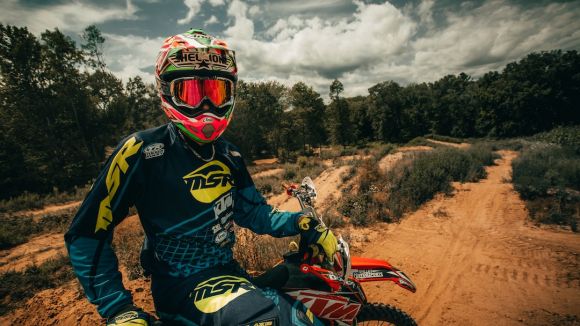Off-road riding can be an exhilarating and challenging experience for beginners. Whether you are new to the world of off-road biking or looking to improve your skills, these essential tips will help you navigate the trails with confidence and ease.
Choosing the Right Bike
Before hitting the trails, it is crucial to choose the right bike that suits your off-road riding needs. Consider factors such as the type of terrain you will be riding on, your skill level, and your budget. There are various types of off-road bikes available, including motocross bikes, trail bikes, and enduro bikes. Research and test ride different models to find the one that feels comfortable and suits your riding style.
Safety First
Off-road riding can be thrilling, but it also comes with inherent risks. Prioritize safety by wearing appropriate protective gear, including a helmet, goggles, gloves, knee and elbow pads, and sturdy boots. These safety gears will protect you from potential injuries and make your riding experience more enjoyable.
Mastering the Basics
Before venturing onto challenging trails, it is essential to master the basics of off-road riding. Start by practicing in open areas with little to no obstacles, such as an empty parking lot or a flat field. Focus on developing your balance, throttle control, and braking skills. Gradually increase the difficulty level by incorporating small obstacles and practicing cornering techniques.
Maintaining Proper Body Position
Maintaining the correct body position is crucial for maintaining control and stability while riding off-road. Stand up on the footpegs, with your knees slightly bent, elbows out, and head up. This position allows you to absorb the bike’s movements and maneuver through rough terrains more effectively. Remember to keep your weight centered and distribute it evenly between the footpegs.
Reading the Trail
Off-road riding requires the ability to read and anticipate the trail ahead. Look ahead and scan the terrain for potential obstacles, such as rocks, roots, or ruts. Adjust your speed and line accordingly to navigate these obstacles safely. Developing this skill will help you maintain a smooth and controlled ride while avoiding potential hazards.
Mastering Braking Techniques
Proper braking is essential for off-road riding. Unlike on-road riding, off-road braking requires a different approach. Learn to modulate the brakes to prevent wheel lock-up and skidding. Practice using both the front and rear brakes individually and together to understand their effects on the bike’s stability. Remember to be gentle with the brakes, especially when riding on loose or slippery surfaces.
Understanding Throttle Control
Throttle control is vital for maintaining traction and controlling your bike’s power. Smoothly and progressively apply the throttle to avoid spinning the rear wheel or losing control. In challenging situations, such as climbing steep hills or navigating tight corners, use the clutch and throttle together to maintain control and prevent stalling.
Building Confidence Gradually
Off-road riding can be intimidating for beginners, but building confidence gradually is key. Start with easy trails and gradually progress to more challenging ones as you gain experience and skill. Pushing yourself too hard too soon can lead to accidents and hinder your progress. Take your time, practice regularly, and enjoy the learning process.
Conclusion
Off-road riding offers a unique and thrilling experience for beginners. By following these essential tips, you can build a solid foundation and improve your off-road riding skills. Remember to prioritize safety, practice regularly, and enjoy the adventure that off-road riding has to offer. With time and experience, you will become a skilled and confident off-road rider.
